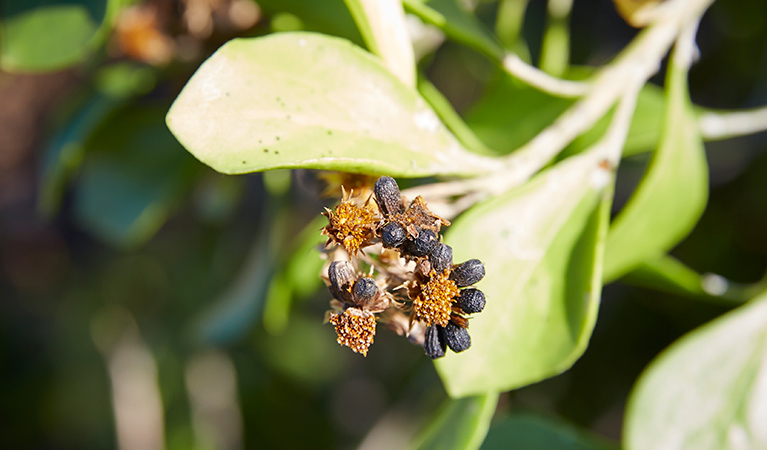Bitou bush threat abatement plan
Bitou bush poses a serious and widespread threat to threatened species populations and ecological communities on the NSW coast. The NPWS bitou bush threat abatement plan helps to reduce the impact of weeds at priority sites using control measures such as ground spraying, aerial spraying, biological control and physical removal.
Read more about Bitou bush threat abatement plan
Bitou bush is one of the greatest threats to coastal biodiversity. Since its introduction around 1908, it has spread to occupy approximately 46 per cent of the NSW coastline, where it endangers at least 157 native plant species, 3 endangered plant populations, and 24 ecological communities.
Evidence suggests that bitou bush invasion also causes the decline of some native bird populations such as little terns. Left unchecked, bitou bush and boneseed would eventually grow to affect the entire coast, smothering sand dunes, headlands, hind dunes and estuarine areas.
Bitou bush was listed as a Key Threatening Process under the NSW Threatened Species Conservation Act 1995. In response, a threat abatement plan (TAP) was developed and released in 2006 with the aim of reducing the impact of these weeds to specific biodiversity at risk. The TAP involves multiple stakeholders, from NPWS, local councils to community groups and bush regenerators. It targets bitou bush management to specific priority sites with control methods such as ground spraying, aerial spraying, biological control and physical removal.
Parks related to this program
- Crowdy Bay National Park
- Booti Booti National Park
- Myall Lakes National Park
- John Gould Nature Reserve
- Tomaree National Park
- Glenrock State Conservation Area
- Wallarah National Park
- Munmorah State Conservation Area
- Wyrrabalong National Park
- Wamberal Lagoon Nature Reserve
- Bouddi National Park
- Lion Island Nature Reserve
- Ku-ring-gai Chase National Park
- Ukerebagh Nature Reserve
- Tweed Estuary Nature Reserve
- Cudgen Nature Reserve
- Wooyung Nature Reserve
- Billinudgel Nature Reserve
- Marshalls Creek Nature Reserve
- Brunswick Heads Nature Reserve
- Marshalls Creek Nature Reserve
- Tyagarah Nature Reserve
- Walgun Cape Byron State Conservation Area
- Arakwal National Park
- Broken Head Nature Reserve
- Richmond River Nature Reserve
- Broadwater National Park
- Bundjalung National Park
- Yuraygir National Park
- Moonee Beach Nature Reserve
- Arakoon National Park
- Hat Head National Park
- Goolawah National Park
- Goolawah Regional Park
- Limeburners Creek National Park
- Sea Acres National Park
- Towra Point Nature Reserve
- La Perouse area
- Kurnell area


